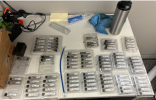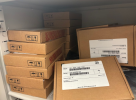thecomputerguy
Well-Known Member
- Reaction score
- 1,435
So in this environment we are using a Ubiquiti UDM SE with 2 available SFP ports alongside a 48-Port Ubiquiti switch with two available SFP ports. I know the correct way to connect these two devices is using a DAC cable and SFP ports as opposed to connecting them via a Cat6 cable port to port... but why?
The key points that make me ask this question is...
The clients internet is 300d/100u.
All clients are only cable of 100/1000 or are using the a standard 1G ethernet port or are on WiFi.
The connectivity speed between the UDMSE and the 48Port Switch using ethernet should be 1000mbps using an ethernet cable (right?).
What does using the SFP port with a DAC cable utilizing 10G SFP connected between the two devices bring to the table if all client connectivity maxes out at 1000mbps anyways and their internet is 300/100?
I fell kind of dumb asking this because I should know, but I don't.
The key points that make me ask this question is...
The clients internet is 300d/100u.
All clients are only cable of 100/1000 or are using the a standard 1G ethernet port or are on WiFi.
The connectivity speed between the UDMSE and the 48Port Switch using ethernet should be 1000mbps using an ethernet cable (right?).
What does using the SFP port with a DAC cable utilizing 10G SFP connected between the two devices bring to the table if all client connectivity maxes out at 1000mbps anyways and their internet is 300/100?
I fell kind of dumb asking this because I should know, but I don't.



